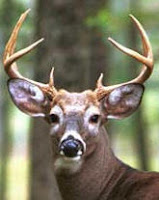 |
| BBFSF -- or foe? |
Earlier this week, she appeared again in the shower area, but this time
she was wily: after jumping around a bit up near the ceiling, she moved behind
a grab bar on the far wall, as if to shield herself from the water. That’s one smart spider.
A few hours later, she disappeared . . . then resurfaced near the door.
Then, she was absent altogether till yesterday,
when she was back in the shower.
 |
| Brown Recluse |
Now, an ethical dilemma: if summertime is when outdoor spiders build
their webs, catch prey, lay eggs and ultimately die with the season (shades of Charlotte’s Web), does my BBFSF yearn to
be out there too? Should I try to gently
catch her and take her outdoors so she can live au naturel?
That question was complicated when I googled and read about spiders in Wikipedia
and “spiders of NJ” entries. The numerous varieties of spiders include
poisonous ones, and not all spiders make webs or, I now hope, find their way
into bathrooms.
Judging by the number of exterminators
whose websites describe spiders, these air-breathing anthropods with 8 legs are
not universally welcome indoors -- you know who I'm thinking of, black widow and brown recluse.
What have I got here? Who am I
hosting? What to do?
from the dark & deep
 |
| Squid |
Earlier this month, a deep-sea exploration crew in the Gulf of Mexico
caught a giant squid on video -- the first sighting in US waters -- as it
briefly examined a bait object some 3,000 feet down. Determining it was not a meal, the squid
quickly withdrew from view.
To see life deep down and dark, the crew had used a special camera
system with red light undetectable to creatures there. Nearing the end of their two-week search, they
got much more than they expected: the first giant squid to be seen anywhere
since 2012, when another squid had been observed off the coast of Japan.
Countering their joy was the threat of a water spout forming near the
ship, then a lightning strike of the metal vessel that could have knocked out
their film record (but didn’t). Their brief
squid glimpse was a thrill for those involved (some of whom had seen the
earlier one, off Japan), as well as anyone following news of its sighting.
And what a sight
it was: “It’s got eight writhing arms and two slashing tentacles. It has the
largest eye of any animal we know of, it’s got a beak that can rip flesh. It
has a jet propulsion system that can go backwards and forwards, blue blood and
three hearts. It’s an amazing, amazing life form we know almost nothing about,”
according to Edith Widder, an expedition leader.
phone early & often!
No decision by
Governor Murphy yet on the horrible S2419, so our course is clear: Phone the governor and ask that he
veto this bill -- which is little more than a license to kill
wildlife in reprehensible ways over expanded areas of NJ. (609-292-6000)
#
Your comments are always welcome! Just
go to 1moreonce.blogspot.com and share your thoughts.

















